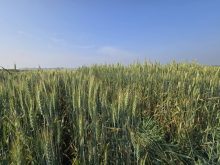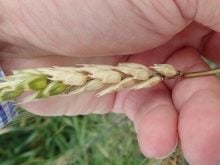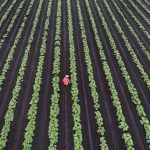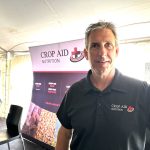Cigi researchers are working with two technologies that show promise for upgrading fusarium-damaged grain.
In partnership with the University of Saskatchewan, the institute has spent three years investigating the possibilities of near-infrared spectroscopy using a Swedish-designed BoMill.
The institute has also been looking at the use of optical sorters, and presented both technologies at a series of recent workshops.
Producers recently brought in samples of fusarium-affected grain to see whether wheat and durum infected with the disease could be salvaged.
“We looked at some pretty extreme stuff, we where looking at, in the case of durum, anywhere from 6.6 per cent to 18 per cent fusarium, and in the case of winter wheat, we did try one at .8 per cent up to as much as 26 per cent,” said Rex Newkirk, the institute’s vice-president research and innovation.
Read Also
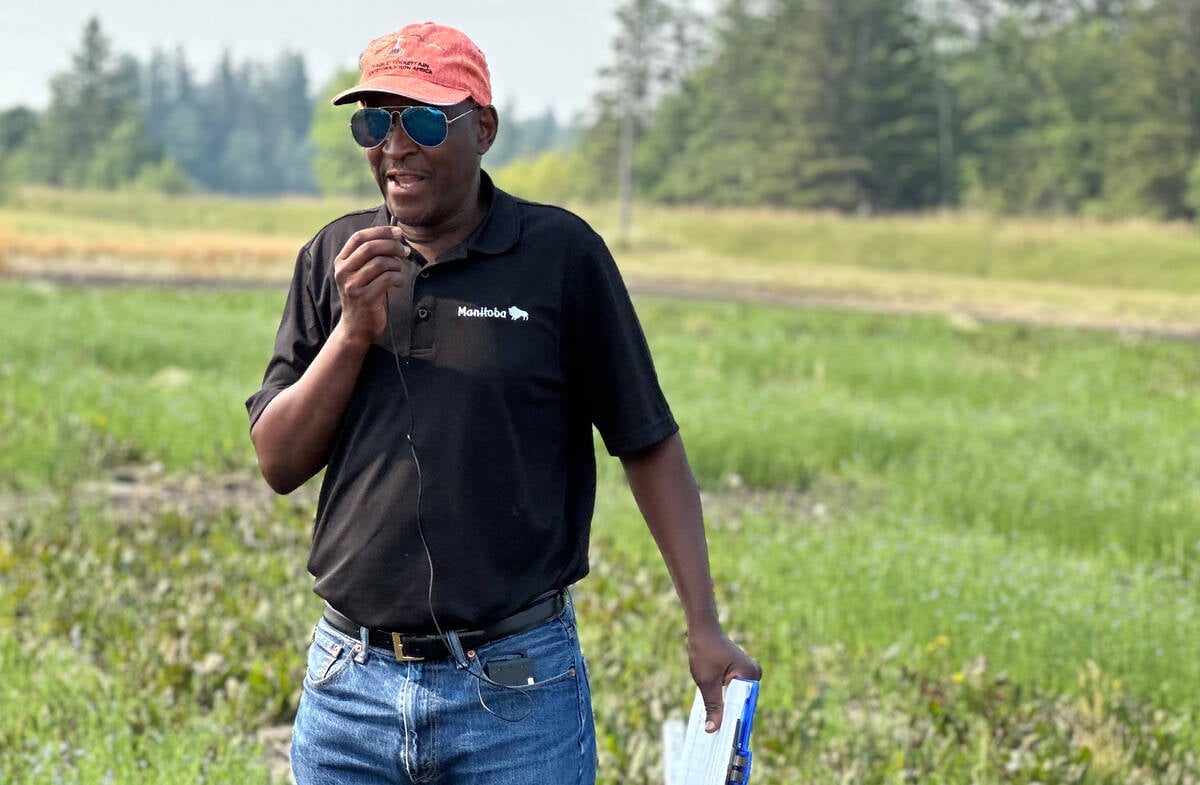
How much nitrogen can farmers really cut?
Manitoba fertilizer trials look for nitrification inhibitor sweet spot, to lower greenhouse gas emissions and cost without hurting yield.
“In some of these cases we could upgrade them to a one, in other cases you could only take them so far… because of issues like mildew or sprouting.”
Grading tolerances relegate levels above four per cent fusarium-damaged kernels in both crops to feed status, although even that is too high to be safely fed to some species of livestock.
Newkirk said fusarium head blight was particularly bad across the Prairies during the summer of 2014.
“We’ve had a major downgrading of winter wheat because of fusarium, the majority of the winter wheat crop was affected… there are some pockets where they didn’t get it, but for the most part the vast majority of the winter wheat has been decimated by fusarium, and when I say decimated, I mean really large concentrations,” he said.
Spring wheat was also affected, although not as significantly, and durum took a solid hit as well, said Newkirk.
“Only about 12 per cent of the durum crop is going to make it into the grades one and two, so from a buyer’s perspective, there’s just not much available,” he said.
Newkirk said as it appears the disease is here to stay, the two technologies showcased at the recent workshops merit consideration.
“One we did some research on and the other one we relied on the experience of others who have been using it.”
It was with optical sorting, which has been in use for a number of years now, that Cigi relied on the experience of others.
“They used to call them colour sorters because they sorted out grain based on colour, but now they’ve gotten more sophisticated where it’s a high-speed camera. The grain is falling sort of like a waterfall… and it’s got cameras pointing at it in different directions… and then if it sees something that you’ve trained it to say you don’t want, it will, you can set it to say after 2.2 milliseconds blow a puff of air throughout that waterfall and kick out the kernel that is defective,” he said.
Optical sorters are less expensive than infrared technologies, and have higher throughput, but they do have limitations. While visual identification of problem kernels can clean wheat and even upgrade it, it can’t sort based on problems that can’t be seen with the eye.
That is where something like the BoMill comes in, Newkirk said. Using near-infrared analysis, chemical compositions can be detected, and sorting can look at disease without visual manifestation or even sort grain kernels based on protein content.
“The way the machine works, imagine a large drum on its side, and that drum had little holes drilled into it on the inside that fit the wheat kernel, so the drum is turning and the wheat is being spun to the middle of it and when it falls out of the drum it spreads out through the whole drum and the grain kernels get trapped individually,” he said.
Each of those kernel-trapping pockets also has an exit hole, and using near-infrared transmittance to determine which seeds go where, kernels are sorted into as many as three categories.
But the technology, especially infrared sorting, does not come cheap. A BoMill costs about $350,000.
Newkirk says where these technologies fit and pay dividends is someplace like a seed-cleaning plant.
“It fits well into a seed-cleaning plant, the idea being that in the seed-cleaning plant, if you can’t upgrade it with just a gravity table and things like that, then you would take that material you’ve cleaned and put it through something like a BoMill,” he said.
And seeing that fusarium is here to stay, Newkirk said these technologies bear further examinations.
“I think fusarium is here to stay with us, but this year was especially bad, and hopefully we never see a repeat of this but that’s not exactly how it works, these things come and go, and this year it’s coming,” he said.





